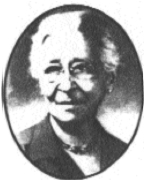The district PTA is responsible for organizing PTAs. Procedures for organizing all PTA organizations such as preschool, special education or parent-teacher-student associations are the same. The bylaws are adapted to fit the particular needs of the PTA.
Parent-Teacher-Student Association (PTSA)
National PTA encourages establishment of parent-teacher-student associations (PTSAs) under requirements and conditions to be determined by state PTAs.
California State PTA encourages student participation in both PTA and PTSA, as determined by the unit. California State PTA incorporated as the California Congress of Parents, Teachers, and Students to reflect its support of student participation. All references to PTAs in the California State PTA Toolkit are intended to represent both PTAs and PTSAs.
Students can participate in any PTA in many ways: (a) serving on committees, including the executive board; (b) serving in an advisory capacity; (c) helping with PTA projects; (d) participating in PTA programs; (e) promoting cooperative projects; and (f) attending conventions. It is not against the California Corporations Code or civil law for students to be elected to serve in any PTA office. Financial institutions should be contacted regarding age requirements for financial officers.
All PTAs shall offer students, upon payment of membership dues, all membership privileges and responsibilities (Involving Students).
Preschool Association
A preschool PTA may be organized in any preschool program, such as Head Start, nursery schools, and child-care centers.
Preschool and Early Childhood Education Sections
Preschool and early childhood education programs should be developed by PTAs in recognition of the significance of this time in the child’s life. Such programs can be developed in many ways, depending on the needs of the particular community, its children, and their parents.
For example, an early childhood (or preschool) chairman might be appointed to call attention to the need for guiding young children effectively; programs and reports might be presented and studies made under this chairman’s leadership.
A preschool section, discussion, or study group could be established within a PTA for parents of very young children to obtain information, insight, knowledge, and skills in fulfilling their responsibilities. The section is largely conducted by the parents themselves, governed by the PTA bylaws and standing rules as adopted by the section members. The work of the section is a part of the total work of the association.
Special Education Association
This type of PTA should be organized in a school focused on special education students.
Special Education Sections
The PTA encourages the establishment of special education sections in any association where parents of children with special needs can come together for study of and action on their particular concerns. Projects and activities related to children with special needs can be promoted, and study groups can be formed to further interest in and understanding of children with special needs. Operation of the section is primarily the responsibility of the parents of children in special classes.
A special education section functions as an integral part of the PTA, much as the various committees function. Joining a special education section means, therefore, becoming a member of the PTA. Although it is governed by the Bylaws for Local PTA/PTSA Units, the section may adopt a set of standing rules to provide details not included in the bylaws. The framework of organization should be kept simple.
The financial needs of a special education section, usually limited to the purchase of study group material and the cost of authorized projects, are provided for in the regular budget of the PTA. Fundraising activities to cover special needs of the section should conform to the policies of California State PTA. Funds so derived should be deposited in the treasury of the PTA and earmarked for section use.
Community College Association
California State PTA authorizes the following:
- Community college associations may work directly with the district PTA (even though located within a council area);
- Community college associations may adapt the recommended pattern of PTA committee work to fit their own special activities; and
- Community college associations are urged to promote opportunities for PTA leaders to conduct discussions on PTA objectives and programs with students.
Other Site Associations
PTAs may be organized at any site, including businesses, court schools, and community centers.
All references to PTAs in the California State PTA Toolkit are intended to represent both PTAs and PTSAs.
Through channels: This refers to the route of formal communications relied on by PTA. Typically, information, inquiries and reports are sent from unit to council (if in council), by a council to district PTA, and by a district PTA to California State PTA. That way, everyone is in the loop.
 Alice McLellan Birney
Alice McLellan Birney Phoebe Apperson Hearst
Phoebe Apperson Hearst Selena Sloan Butler
Selena Sloan Butler